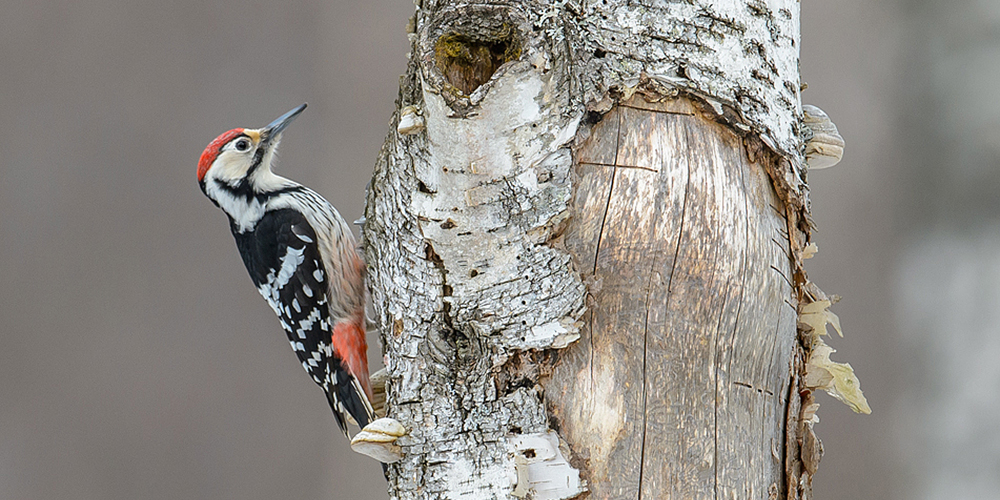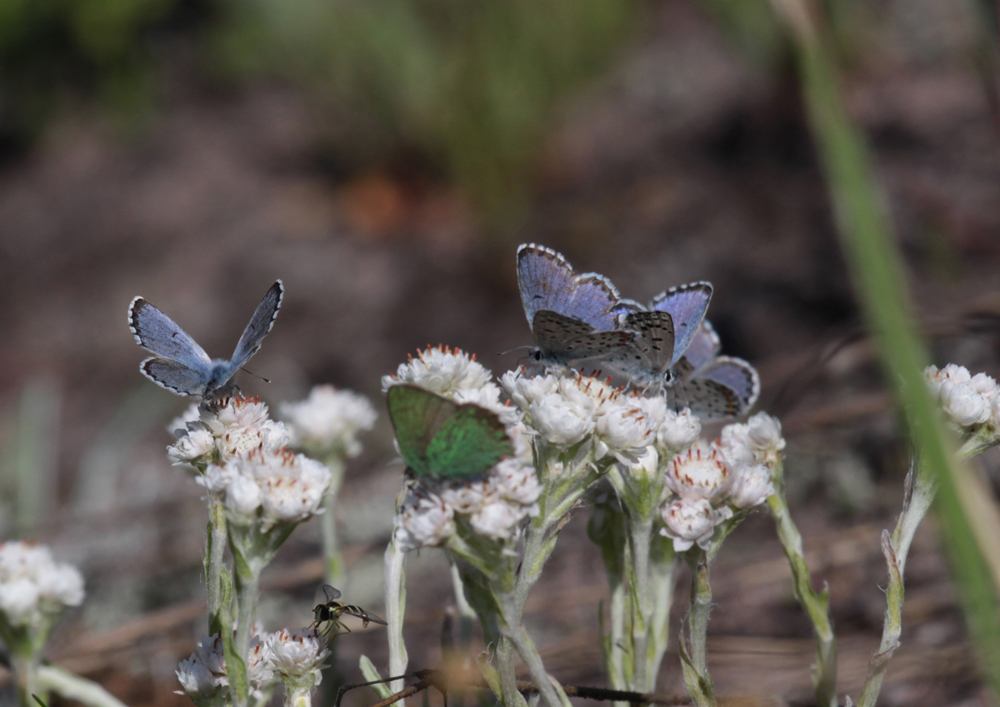Record number of white-backed woodpecker in Finland – many endangered forest species doing well

Good news from Finnish forests: many endangered species are doing better, thanks to protection efforts and improved forest management. In addition to the white-backed woodpecker, the flat bark beetle Cucujus cinnaberinus and the eastern baton blue butterfly have benefited.
The white-backed woodpecker is one of Finland’s most endangered forest birds, whose population was estimated to be only 30 pairs twenty years ago. This summer, the woodpecker population has grown to more than 250 nesting pairs, and 140 broods were confirmed.
According to a survey by the Finnish state-owned forestry company Metsähallitus, WWF Finland and BirdLife Finland, nests were found all across Finland. The white-backed woodpecker prefers the wooded eastern Finland, but its population has also grown along the south and west coasts.
One reason why the population of the white-backed woodpecker has increased in Finland is a record mass migration across the Russian border in autumn 2015. In Russia, the population is strong.
“The protection of the white-backed woodpecker has had a slow but definite effect, and the population is slowly improving, but the mass migration of thousands of birds from the East was a veritable booster shot,” said Mr. Timo Laine, well-known expert on the white-backed woodpecker at Metsähallitus Parks & Wildlife Finland, as the results of the population survey were published.
The white-backed woodpecker is now classified as vulnerable in the IUCN Red List of Threatened Species. According to Laine, woodpeckers were observed even during the breeding season from Åland to Central Lapland.
Woodpecker thrives in ordinary commercial forests
The cause of the plight of the white-backed woodpecker has been the decrease of deciduous trees and decayed wood due to forestry. “Its most important sources of food can be found in decayed deciduous trees, and the nest hole is usually also hollowed in decayed wood,” Laine said.
“Now more than ever, the habitat requirements of the white-backed woodpecker should also be taken into account in forest management. The protected areas are not enough to maintain a viable population.”
Last year, a new forest management guide that does take account of the white-backed woodpecker was published. Thanks to these instructions by the Finnish forest industry company UPM, Metsähallitus, the Finnish Environment Institute Syke and WWF, the life of the white-backed woodpecker could improve a great deal with appropriate forest management.
The best way to achieve this is to spare birches and other deciduous trees in Finland’s conifer-dominated forests, as well as, of course, to leave deadwood on felling sites.
“We found that the critical factor is not finding trees for nesting, but for feeding,” said Mr. Juha-Matti Valonen, environmental specialist at UPM, to forest.fi in connection with the publication of the instructions.
UPM has long studied the conditions affecting the white-backed woodpecker’s survival in commercial forests. For this woodpecker, the most important tree species are alder and goat willow, which decay very rapidly and thus can provide food for the woodpecker.
“These trees are often of little significance for forestry, so it is no problem sparing them in connection with regeneration fellings,” said Valonen.
Red-backed beetle also thrives in old aspen trees
In addition to the white-backed woodpecker, many other endangered species will also benefit from increased attention to biodiversity in forest management and, for example, from sparing trees during fellings.
A species that likes old aspen trees is the flat bark beetle Cucujus cinnaberinus. The critically endangered species lives in only two areas in Finland: Evo and Kuhmoinen.
Both areas are part of the Natura 2000 network and a EU-funded LIFE project, partly implemented by volunteers. The same project has also managed a white-backed woodpecker habitat of over 80 hectares inside a Natura 2000 site.

Finnish Defence Forces protect a blue butterfly
According to the Finnish Environment Institute, the status of a number of butterflies was strengthened this summer, too. Endangered species such as the clouded Apollo (Parnassius mnemosyne) and the eastern baton blue (Pseudophilotes vicrama) have experienced a good year.
The eastern baton blue benefits from forest regeneration by wildfire or prescribed burning, which create a dry and sunny habitat for it. In the past, such habitats could often be found on hillsides.
However, due to current forest management practices, effective fire protection, as well as the abandonment of woodland pastures, open and sunny habitats are rare today.
Thanks to the Finnish Defence Forces, though, the eastern baton blue has survived in Säkylä, a municipality in south-west Finland. The habitat of the butterfly is located in a military training area, where regular field exercises create and maintain an open terrain.
Due to the strong population in Säkylä, some of the blue-winged butterflies could even be transferred to a new site this summer. However, the Finnish Environment Institute will not disclose the exact location in southern Häme, to allow the butterflies to become used to their new environment without being disturbed.
Kirjoita kommentti